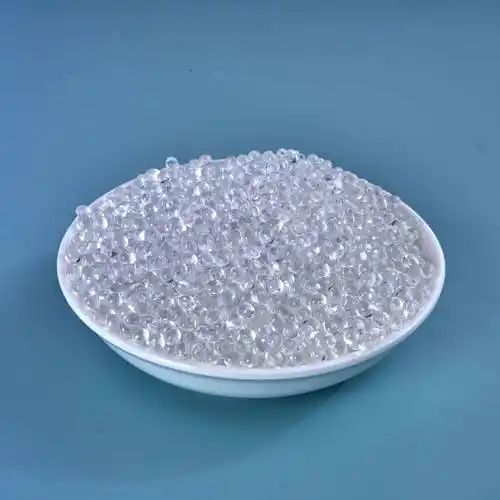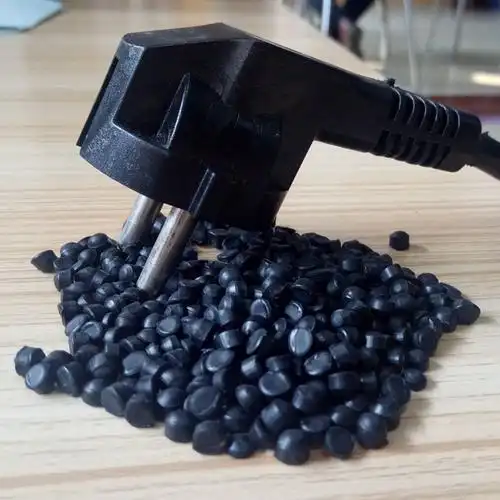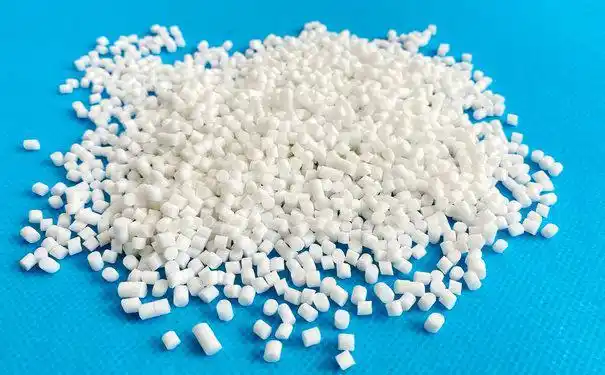As someone who’s been immersed in the materials industry for over a decade, I’ve seen firsthand how versatile and game-changing Thermoplastic Elastomers (TPEs) can be. These materials, which combine the flexibility of rubber with the processability of plastics, have carved out a significant niche across industries like automotive, medical, consumer goods, and more. If you’re curious about the different types of TPE materials and what makes each one unique, you’re in the right place. Let’s dive into the world of TPEs, explore their classifications, and break down their applications in a way that’s clear and practical.

Understanding TPEs: A Quick Primer
Before we get into the types, let’s set the stage. TPEs are a class of polymers that offer elasticity similar to traditional rubber but can be molded and reshaped like thermoplastics. This dual nature makes them incredibly versatile, allowing manufacturers to create durable, flexible products with ease. Whether it’s a soft-touch grip on a toothbrush or a seal in an automotive component, TPEs are everywhere.
What I love about TPEs is their adaptability. They can be tailored to specific needs—whether you want something soft and stretchy or tough and resilient. But with so many types available, it’s easy to feel overwhelmed. That’s why I’m breaking down the main categories of TPEs, their properties, and where they shine, so you can make sense of this diverse material family.
The Main Types of TPE Materials
TPEs are broadly classified into six major types, each with distinct characteristics and applications. Below, I’ve outlined each type, drawing from my experience working with manufacturers and engineers to highlight what sets them apart.
1. Styrenic Block Copolymers (SBCs or TPE-S)
Styrenic block copolymers, often referred to as TPE-S, are the most common type of TPE. They’re based on a block copolymer structure, typically combining styrene with butadiene or isoprene. If you’ve ever held a soft, grippy phone case or a flexible toy, chances are it was made from TPE-S.
Key Properties: TPE-S materials are soft, highly elastic, and offer excellent clarity and colorability. They’re also cost-effective, which is why they’re a go-to for consumer products.
Applications: Think overmolded grips, seals, gaskets, and even medical tubing. Their versatility makes them a favorite in industries where aesthetics and comfort matter.
Pros: Affordable, easy to process, and recyclable.
Cons: Limited heat resistance and lower strength compared to other TPEs.
In my early days working with product designers, I saw TPE-S used extensively in consumer electronics because of its ability to create a premium “soft-touch” feel at a low cost. However, for high-temperature environments, you’d need to look elsewhere.

2. Thermoplastic Polyolefins (TPO or TPE-O)
TPOs are blends of polypropylene (PP) and rubber, often ethylene-propylene rubber (EPR). These materials are tough, impact-resistant, and widely used in applications where durability is key. I’ve seen TPOs dominate in the automotive industry, where they’re used for parts that need to withstand harsh conditions.
Key Properties: Excellent impact resistance, good chemical resistance, and UV stability.
Applications: Automotive bumpers, exterior trim, and roofing membranes.
Pros: Weather-resistant and recyclable.
Cons: Less flexible than TPE-S and can be harder to process.
One project I worked on involved selecting TPO for an automotive bumper. The material’s ability to absorb impact while maintaining its shape was a game-changer, especially in regions with extreme weather.
3. Thermoplastic Vulcanizates (TPV)
TPVs are a step up from TPOs, featuring a dynamically vulcanized rubber phase (usually EPDM) within a polypropylene matrix. This gives them superior elasticity and resilience compared to TPOs. If you’ve ever handled a weather seal on a car door, you’ve likely encountered TPV.
Key Properties: Excellent elasticity, chemical resistance, and heat resistance up to 135°C.
Applications: Automotive seals, weatherstripping, and industrial hoses.
Pros: Combines rubber-like performance with thermoplastic processability.
Cons: Higher cost than TPE-S or TPO.
I recall a manufacturer switching to TPV for a sealing application after struggling with traditional rubber’s processing limitations. The switch reduced production time and costs significantly.
4. Thermoplastic Polyurethane (TPU)
TPUs are known for their exceptional toughness and abrasion resistance. They’re a bit pricier but worth it for applications requiring durability and flexibility. I’ve seen TPUs shine in high-performance settings, like sports equipment and medical devices.
Key Properties: High abrasion resistance, excellent mechanical strength, and good flexibility.
Applications: Phone cases, footwear soles, medical catheters, and conveyor belts.
Pros: Durable, transparent options available, and biocompatible grades for medical use.
Cons: More expensive and sensitive to moisture during processing.
In one project, we used TPU for a wearable medical device. Its biocompatibility and flexibility made it perfect for skin-contact applications, though we had to ensure strict moisture control during manufacturing.

5. Thermoplastic Copolyester (TPC or TPE-E)
TPCs offer a unique combination of flexibility, heat resistance, and chemical resistance. They’re often used in demanding applications where other TPEs might fail. I’ve seen TPCs in action in automotive and aerospace components, where precision and reliability are non-negotiable.
Key Properties: High heat resistance (up to 150°C), excellent chemical resistance, and good fatigue resistance.
Applications: Automotive air ducts, cable insulation, and industrial belts.
Pros: Performs well in extreme conditions.
Cons: Higher cost and limited flexibility at lower temperatures.
I once consulted on a project where TPC was chosen for an aerospace cable insulation. Its ability to withstand high temperatures and harsh chemicals made it a standout choice.
6. Thermoplastic Polyamide (TPA or TPE-A)
TPAs are less common but highly specialized, combining polyamide (nylon) with elastomeric components. They’re used in niche applications where chemical resistance and high performance are critical.
Key Properties: Excellent chemical resistance, good heat resistance, and high strength.
Applications: Automotive fuel lines, industrial tubing, and high-performance seals.
Pros: Exceptional performance in harsh environments.
Cons: Expensive and complex to process.
In my experience, TPAs are often reserved for high-stakes applications. I worked with a client who used TPA for fuel lines in heavy machinery, where failure wasn’t an option.

Comparison of TPE Types: A Handy Table
To make it easier to compare these TPE types, here’s a table summarizing their key characteristics and applications:
|
TPE Type |
Key Properties |
Main Applications |
Cost Level |
|---|---|---|---|
|
TPE-S (SBC) |
Soft, elastic, cost-effective |
Grips, seals, toys |
Low |
|
TPO |
Impact-resistant, UV-stable |
Automotive bumpers, roofing |
Moderate |
|
TPV |
Elastic, heat-resistant |
Automotive seals, hoses |
Moderate-High |
|
TPU |
Tough, abrasion-resistant |
Phone cases, medical devices |
High |
|
TPC |
Heat/chemical-resistant |
Air ducts, cable insulation |
High |
|
TPA |
High strength, chemical-resistant |
Fuel lines, industrial tubing |
Very High |
This table is a snapshot, but the right TPE for your project depends on specific requirements like temperature, flexibility, and budget. In my years in the field, I’ve learned that selecting the right TPE often comes down to balancing performance with cost.
Why TPEs Are a Game-Changer
What makes TPEs so special is their ability to bridge the gap between rubber and plastic. Unlike traditional rubber, which requires complex vulcanization processes, TPEs can be melted, molded, and recycled with ease. This not only reduces production costs but also aligns with the growing demand for sustainable materials. In my work, I’ve seen companies switch to TPEs to meet environmental regulations without sacrificing performance.
Another advantage is their customization potential. Manufacturers can tweak TPE formulations to achieve specific hardness levels, colors, or even biocompatibility. For example, I once worked with a team developing a medical-grade TPU for a flexible catheter. The ability to fine-tune the material’s properties was a lifesaver for meeting strict regulatory standards.
Challenges in Choosing the Right TPE
While TPEs are versatile, selecting the right type isn’t always straightforward. Here are some challenges I’ve encountered:
Cost vs. Performance: High-performance TPEs like TPU and TPA are fantastic but can strain budgets. I’ve seen clients opt for TPE-S to save costs, only to realize it couldn’t handle their application’s demands.
Environmental Factors: If your product will face extreme heat or UV exposure, TPE-S might not cut it. I’ve had to guide clients toward TPO or TPC for outdoor applications.
Processing Limitations: Some TPEs, like TPU, require precise control during manufacturing. I recall a project where improper moisture management led to defective TPU parts, costing the client time and money.
My advice? Always start with a clear understanding of your application’s requirements—temperature, mechanical stress, chemical exposure, and budget. From there, you can narrow down the TPE type that fits best.

Real-World Applications: Stories from the Field
To give you a sense of how TPEs are used, let me share a couple of examples from my career:
Automotive Seals with TPV: A client was struggling with traditional rubber seals that cracked under extreme temperatures. We switched to TPV, which offered better elasticity and heat resistance. The result? Longer-lasting seals and happier customers.
Consumer Electronics with TPE-S: A startup wanted a soft-touch grip for their new gadget but had a tight budget. TPE-S was the perfect solution—affordable, easy to mold, and available in vibrant colors that made their product pop.
These examples highlight why TPEs are so exciting—they solve real problems across industries, from improving product durability to enhancing user experience.
The Future of TPEs
Looking ahead, I’m optimistic about TPEs. With advancements in material science, we’re seeing new formulations that push the boundaries of performance. For instance, bio-based TPEs are gaining traction as companies prioritize sustainability. I’ve also noticed growing interest in TPEs for 3D printing, which could open up new possibilities for rapid prototyping and custom designs.
In my conversations with industry peers, there’s a clear trend toward TPEs replacing traditional materials in applications like medical devices and automotive components. As manufacturing processes become more efficient, I expect TPEs to become even more accessible and cost-effective.
Wrapping Up
TPEs are a fascinating and versatile class of materials, offering solutions for everything from everyday consumer goods to high-performance industrial components. Whether you’re drawn to the affordability of TPE-S, the durability of TPU, or the specialized performance of TPA, there’s a TPE for nearly every need. My years in the industry have taught me that choosing the right TPE is about understanding your project’s unique demands and finding the balance between performance, cost, and processability.
If you’re exploring TPEs for a project, I recommend starting with a clear list of requirements and consulting with a materials supplier or engineer. The right TPE can make all the difference in bringing your vision to life.

Related Questions and Answers
Q: How do I choose the right TPE for my project?
A: Start by defining your application’s needs—temperature range, flexibility, chemical exposure, and budget. For example, if you need a soft, cost-effective material, TPE-S is a great choice. For high heat or chemical resistance, consider TPC or TPA. Always test samples to ensure compatibility.
Q: Are TPEs environmentally friendly?
A: Yes, many TPEs are recyclable, and their manufacturing process is less energy-intensive than traditional rubber. Bio-based TPEs are also emerging, offering even greener options.
Q: Can TPEs be used in medical applications?
A: Absolutely. TPU, in particular, has biocompatible grades used in catheters, tubing, and wearable devices. Always ensure the material meets regulatory standards like ISO 10993.
Q: What’s the difference between TPE and traditional rubber?
A: TPEs combine rubber-like elasticity with thermoplastic processability, meaning they can be melted and reshaped. Traditional rubber requires vulcanization, which is more complex and less recyclable.
Q: Are TPEs suitable for outdoor use?
A: Yes, but choose wisely. TPO and TPV are excellent for outdoor applications due to their UV and weather resistance. TPE-S, however, may degrade under prolonged sun exposure.





